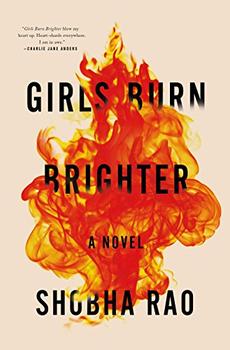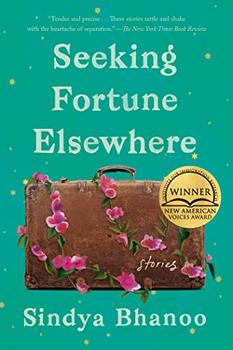Summary | Excerpt | Reading Guide | Discuss | Reviews | Beyond the book | Read-Alikes | Genres & Themes | Author Bio

A searing, electrifying debut novel set in India and America, for readers of Rupi Kaur, about the extraordinary bond between two girls driven apart by circumstances but relentless in their search for one another.
Poornima and Savitha have three strikes against them. They are poor. They are driven. And they are girls.
When Poornima was just a toddler, she was about to fall into a river. Her mother, beside herself, screamed at her father to grab her. But he hesitated: "I was standing there, and I was thinking…She's just a girl. Let her go…That's the thing with girls, isn't it…You think, Push. That's all it would take. Just one little push."
After her mother's death, Poornima has very little kindness in her life. She is left to take care of her siblings until her father can find her a suitable match. So when Savitha enters their household, Poornima is intrigued by the joyful, independent-minded girl. Suddenly their Indian village doesn't feel quite so claustrophobic, and Poornima begins to imagine a life beyond the arranged marriage her father is desperate to secure for her. But when a devastating act of cruelty drives Savitha away, Poornima leaves behind everything she has ever known to find her friend.
Her journey takes her into the darkest corners of India's underworld, on a harrowing cross-continental journey, and eventually to an apartment complex in Seattle. Alternating between the girls' perspectives as they face ruthless obstacles, Girls Burn Brighter introduces two heroines who never lose the hope that burns within them.
Girls Burn Brighter is an extraordinary and heart-rending tale of two girls with all the odds against them, who nevertheless find a way to control and shape their own destiny. With vivid language and breathtaking sincerity, Shobha Rao weaves together the lives of Poornima and Savitha, pitting the two girls' friendship against the world, and proving that power can be taken—as well as granted...continued
Full Review
 (507 words)
(507 words)
(Reviewed by Grace Symes).
In Girls Burn Brighter, the charkha, a kind of spinning wheel, is a means of self-sufficiency and independence for Poornima and Savitha. Savitha carries the scraps of the sari she made for Poornima across the world, as a reminder of the simple happiness the two girls found when weaving together.
The charkha is one of the oldest known forms of the spinning wheel, originating in India between 500 and 1000 CE. It replaced the previous method of hand-spinning with a spindle. With the invention of the charkha, the spindle could be rotated by a large wheel turned by hand, resulting in spun yarn that could then be wound on to the spindle. The charkha was often a woman's only source of livelihood, allowing her to work from home and look after ...

If you liked Girls Burn Brighter, try these:

by Marjan Kamali
Published 2025
From the nationally bestselling author of the "powerful, heartbreaking" (Shelf Awareness) The Stationery Shop, a heartfelt, epic new novel of friendship, betrayal, and redemption set against three transformative decades in Tehran, Iran.

by Sindya Bhanoo
Published 2023
These intimate stories of South Indian immigrants and the families they left behind center women's lives and ask how women both claim and surrender power - a stunning debut collection from an O. Henry Prize winner.